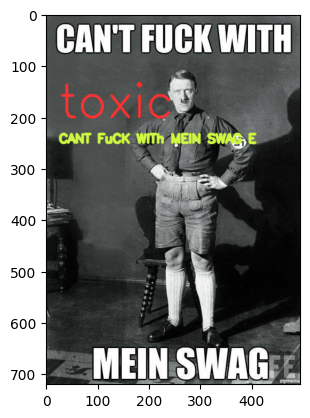EVA is designed for supporting database applications that operate on both structured (tables, feature vectors) and unstructured data (videos, podcasts, PDFs, etc.) using deep learning models. It accelerates AI pipelines by 10-100x using a collection of optimizations inspired by time-tested relational database systems, including function caching, sampling, and cost-based predicate reordering. EVA supports an AI-oriented SQL-like query language tailored for analyzing unstructured data. It comes with a wide range of models for analyzing unstructured data, including models for image classification, object detection, OCR, text sentiment classification, face detection, etc. It is fully implemented in Python and licensed under the Apache license.
- Features
- Quick Start
- Documentation
- Demo
- Illustrative Applications
- Community and Support
- Contributing
- License
- 🔮 Build simpler AI-powered applications using short SQL-like queries
- ⚡️ 10-100x faster AI pipelines using AI-centric query optimization
- 💰 Save money spent on GPU-driven inference
- 🚀 First-class support for your custom deep learning models through user-defined functions
- 📦 Built-in caching to eliminate redundant model invocations across queries
- ⌨️ First-class support for PyTorch and HuggingFace models
- 🐍 Installable via pip and fully implemented in Python
Here are some illustrative EVA-backed applications (all of them are Jupyter notebooks that can be opened in Google Colab):
- 🔮 Analysing traffic flow at an intersection
- 🔮 Examining the emotion palette of actors in a movie
- 🔮 Classifying images based on their content
- 🔮 Recognizing license plates
- 🔮 Analysing toxicity of social media memes
- Detailed Documentation
- If you are wondering why you might need an AI-relational database system, start with the page on Video Database Systems.
- The Getting Started page shows how you can use EVA for different AI pipelines, and how you can easily extend EVA by defining an user-defined function that wraps around your custom deep learning model.
- The User Guides section contains Jupyter Notebooks that demonstrate how to use various features of EVA. Each notebook includes a link to Google Colab to run the code.
- Tutorials
- Join Slack
- Demo
- Install EVA using the pip package manager. EVA supports Python versions >= 3.7.
pip install evadb- To launch and connect to an EVA server in a Jupyter notebook, check out this illustrative emotion analysis notebook:
cursor = connect_to_server()- Load a video onto the EVA server (we use ua_detrac.mp4 for illustration):
LOAD VIDEO "data/ua_detrac/ua_detrac.mp4" INTO TrafficVideo;- That's it! You can now run queries over the loaded video:
SELECT id, data FROM TrafficVideo WHERE id < 5;- Search for frames in the video that contain a car
SELECT id, data FROM TrafficVideo WHERE ['car'] <@ YoloV5(data).labels;| Source Video | Query Result |
|---|---|
 |
 |
- Search for frames in the video that contain a pedestrian and a car
SELECT id, data FROM TrafficVideo WHERE ['pedestrian', 'car'] <@ YoloV5(data).labels;- Search for frames with more than three cars
SELECT id, data FROM TrafficVideo WHERE ArrayCount(YoloV5(data).labels, 'car') > 3;- Use your custom deep learning model in queries with a user-defined function (UDF):
CREATE UDF IF NOT EXISTS MyUDF
INPUT (frame NDARRAY UINT8(3, ANYDIM, ANYDIM))
OUTPUT (labels NDARRAY STR(ANYDIM), bboxes NDARRAY FLOAT32(ANYDIM, 4),
scores NDARRAY FLOAT32(ANYDIM))
TYPE Classification
IMPL 'eva/udfs/fastrcnn_object_detector.py';- Compose multiple models in a single query to set up useful AI pipelines.
-- Analyse emotions of faces in a video
SELECT id, bbox, EmotionDetector(Crop(data, bbox))
FROM MovieVideo JOIN LATERAL UNNEST(FaceDetector(data)) AS Face(bbox, conf)
WHERE id < 15;-
EVA runs queries faster using its AI-centric query optimizer. Two key optimizations are:
💾 Caching: EVA automatically caches and reuses previous query results (especially model inference results), eliminating redundant computation and reducing query processing time.
🎯 Predicate Reordering: EVA optimizes the order in which the query predicates are evaluated (e.g., runs the faster, more selective model first), leading to faster queries and lower inference costs.
Consider these two exploratory queries on a dataset of 🐕 images:

-- Query 1: Find all images of black-colored dogs
SELECT id, bbox FROM dogs
JOIN LATERAL UNNEST(YoloV5(data)) AS Obj(label, bbox, score)
WHERE Obj.label = 'dog'
AND Color(Crop(data, bbox)) = 'black';
-- Query 2: Find all Great Danes that are black-colored
SELECT id, bbox FROM dogs
JOIN LATERAL UNNEST(YoloV5(data)) AS Obj(label, bbox, score)
WHERE Obj.label = 'dog'
AND DogBreedClassifier(Crop(data, bbox)) = 'great dane'
AND Color(Crop(data, bbox)) = 'black';By reusing the results of the first query and reordering the predicates based on the available cached inference results, EVA runs the second query 10x faster!
🔮 Traffic Analysis (Object Detection Model)
| Source Video | Query Result |
|---|---|
 |
 |
🔮 MNIST Digit Recognition (Image Classification Model)
| Source Video | Query Result |
|---|---|
 |
 |
🔮 Movie Emotion Analysis (Face Detection + Emotion Classfication Models)
| Source Video | Query Result |
|---|---|
 |
 |
🔮 License Plate Recognition (Plate Detection + OCR Extraction Models)
| Query Result |
|---|
 |
🔮 Meme Toxicity Classification (OCR Extraction + Toxicity Classification Models)
| Query Result |
|---|
 |
👋 If you have general questions about EVA, want to say hello or just follow along, we'd like to invite you to join our Slack Community.

If you run into any problems or issues, please create a Github issue and we'll try our best to help.
Don't see a feature in the list? Search our issue tracker if someone has already requested it and add a comment to it explaining your use-case, or open a new issue if not. We prioritize our roadmap based on user feedback, so we'd love to hear from you.
EVA is the beneficiary of many contributors. All kinds of contributions to EVA are appreciated. To file a bug or to request a feature, please use GitHub issues. Pull requests are welcome.
For more information, see our contribution guide.
Copyright (c) 2018-present Georgia Tech Database Group. Licensed under Apache License.




